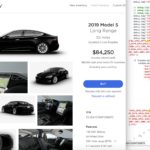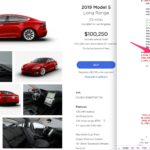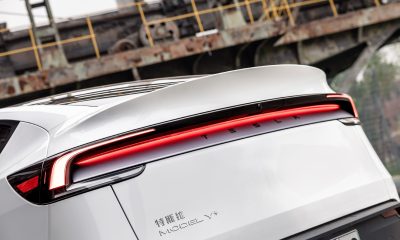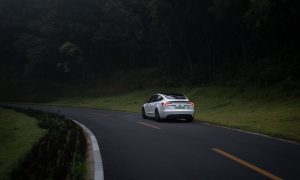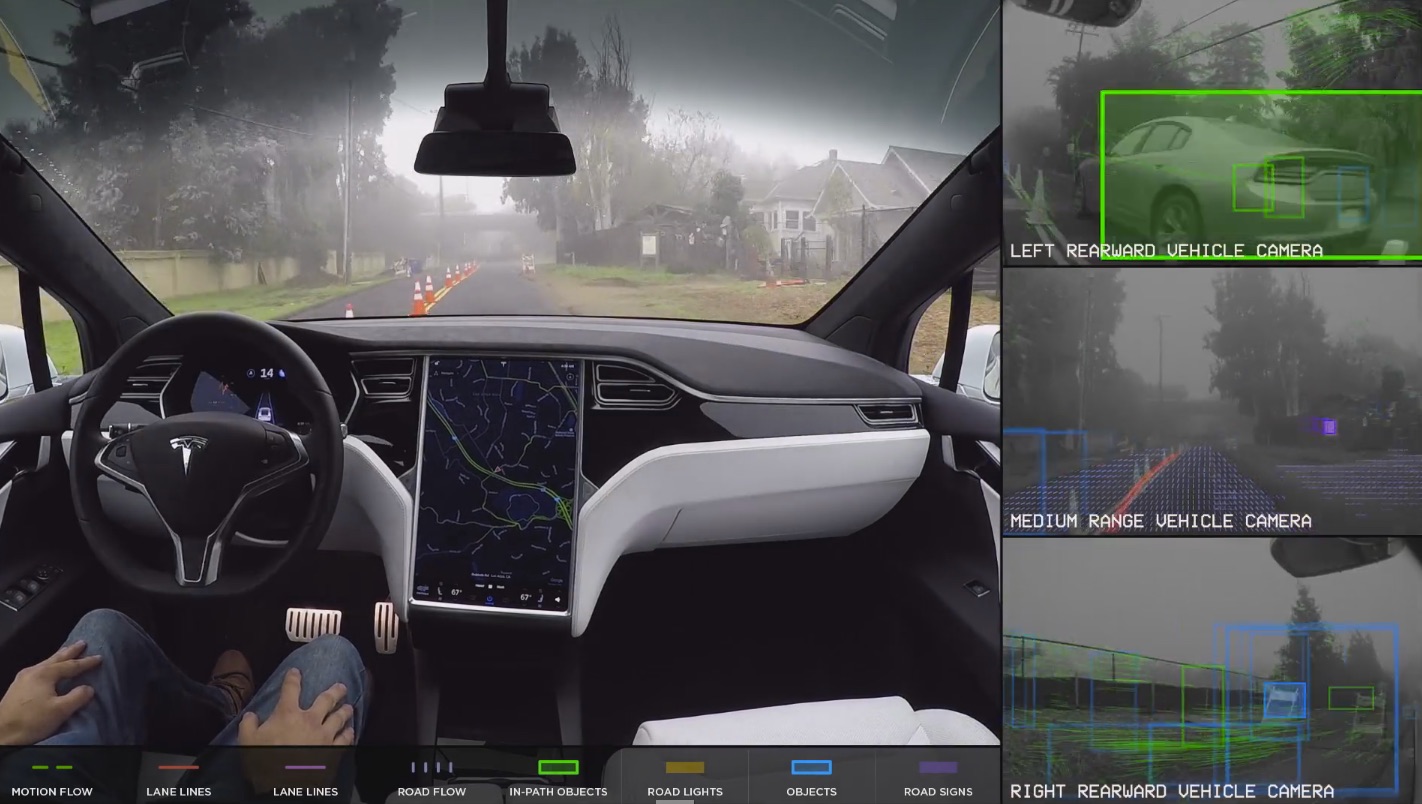

News
Tesla Model S, X with “Hardware 3” for Full Self-Driving now in production, inventory codes indicate
Tesla has begun producing Model X and Model S vehicles with the latest Autopilot hardware to support Full Self-Driving capabilities. Dubbed “HW3”, the new hardware is Tesla’s next iteration of its semi-autonomous driving-assist feature that includes Navigate on Autopilot, Advanced Summon, Auto Lane Change, Autopark, and the ability to respond to traffic lights.
Looking at the source code behind Tesla’s New Inventory site, we’re able to see that recently produced Model S and Model X with Autopilot have been given an “APH4” options code, signifying that these vehicles are equipped with the latest Full Self-Driving hardware. Tesla uses the option code sequence “APHx” to denote the type of Autopilot hardware installed in its vehicles. APH2 indicates HW2 and APH3 = HW2.5 (Autopilot 2.5). Thus, APH4 is HW3.
Here’s a side-by-side comparison of two 2019 Model S with and without the new Hardware 3 for Autopilot.
- 2019 Tesla Model S with Hardware 2.5 (2019 Tesla Model S with “Hardware 3” (APH3)
- 2019 Tesla Model S with “Hardware 3” (APH4)
Source: Tesla New Inventory listing
The tip comes to us from Tesla Info and Inventory, a web site which compiles inventory data for Tesla vehicles around the world, noted that internal vehicle “option codes” indicated a change from Hardware 2.5 to Hardware 3. The site pulls source data directly from Tesla’s car listing pages and analyzes the “config” data embedded in the HTML to determine this information.
This discovery aligns with the schedule for the HW3 installs previously set forth by Tesla CEO Elon Musk. Last October, Musk estimated a 6-month wait before the the new chips would be installed in all new production cars, meaning an April showing.
~6 months before it is in all new production cars. No change to sensors. This is simple replacement of the Autopilot computer. Will be done free of charge for those who ordered full self-driving.
— Elon Musk (@elonmusk) October 16, 2018
Musk has touted HW3 as the “world’s most advanced computer designed specifically” for the purpose of self-driving functionality, with Tesla holding a notable lead in the field overall. “If you add everyone else up combined, they’re probably 5% — I’m being generous — of the miles that Tesla has. And this difference is increasing,” Musk said in Tesla’s 2018 Q4 earnings call.
For vehicles without HW3 installed at the time of manufacture, Musk has stressed the simplicity of the upgrade process in Tesla’s 2018 Q2 earnings call. “We take out one computer and plug in the next. That’s it. All the connectors are compatible and you get an order of magnitude, more processing and you can run all the cameras at primary full resolution with the complex neural net.”
The simple upgrade to HW3 does require Tesla cars to have HW2 as the equipment needed for its functionality was included in those vehicles. The software uses an array of 8 cameras, 12 ultrasonic sensors, and a forward-facing radar paired with Tesla’s vision and neural net system.

The first features of the Full Self-Driving suite were included in the Version 9 software released in October. “Navigate on Autopilot”, an active guidance feature with Autosteer for highway driving (with driver supervision) came soon after with the release of HW2.5. Improvement in performance from software Version 8.1. to 9.0 was increased by about 400% in useful operations per second; however, the difference between V9.0 and HW3 will make a difference of 500-2000%, according to Musk. Tesla has been releasing iterative over-the-air updates over the last year in preparation for the coming HW3 and complete FSD capabilities.
The current iteration of Tesla’s FSD capabilities includes core highway navigation, autopark, and Summon for car retrieval in parking lots. Recognition of traffic signs and signals as well as city street driving are expected to be coming later this year.
Now that HW3 is on its way to current and future Tesla customers, Full Self-Driving certainly feels right around the corner. However, the biggest obstacle to full implementation still sits on the regulation side, a time-consuming yet necessary part of the consumer vehicle industry, especially when a company is handing over responsibility to a computer. Tesla’s Autopilot page still references full self-driving capabilities as something “in the future” that may happen after regulatory approval which “may take longer in some jurisdictions.”
Tesla’s dominance in the all-electric market will most likely work in its favor to overcome the legal hurdles in the way of autonomous driving. As sales continue to rise with the growing number of customers now able to meet more affordable price points, Tesla will keep accumulating useful data to hone its FSD software and make the case for its much-safer-than-humans capabilities. Other companies may have long been battling the same regulatory demons Tesla is now up against, but the electric car was also “killed off” prior to their very influential arrival on the market. In “Musk World”, there is improbable, but not often impossible.
Elon Musk
Elon Musk confirms Grok 4 launch on July 9 with livestream event
The rollout will be accompanied by a livestream at 8 p.m. Pacific Time.

Elon Musk has officially confirmed that Grok 4, the latest version of xAI’s large language model, will launch on July 9. The rollout will be accompanied by a livestream at 8 p.m. Pacific Time, hosted on xAI’s official account on X.
xAI goes straight to Grok 4
Back in May, leaks indicated that xAI was getting ready to ship Grok 3.5. Considering Musk’s recent comments, however, it appears that the artificial intelligence startup would be focusing on the large language model’s fourth iteration instead. As noted in a Financial Express report, users on X have sighted references to Grok 4 in the lead up to the update’s launch, such as “grok-4-prod-mimic” and “Grok 4 Code.”
Musk’s Grok 4 announcement comes as AI competition intensifies between major players including OpenAI, Google, and xAI. With Musk’s Colossus supercomputer fully operational in Memphis, xAI appears to be accelerating its AI product roadmap.
Musk pushes Grok toward political neutrality
Grok 4’s launch also follows a recent controversy involving political bias, as noted in a CNN report. Last week, Grok responded to a user on X stating that political violence in the U.S. since 2016 had come more from the political right than the left. The chatbot noted in a later reply that its answer was based on information from sources like Reuters, the Journal of Democracy, and University of Maryland studies.
Musk stated that Grok’s response was a “major fail.” “Major fail, as this is objectively false. Grok is parroting legacy media. Working on it,” he wrote in a post on X. By the end of June, Musk noted that he was “grinding all night with the xAI team” and that they were making “good progress.” He also stated that the model “Will be called Grok 4. Release just after July 4th. Needs one more big run for a specialized coding model.”
News
Tesla opens massive solar Supercharger station in California
The Supercharger opened to customers ahead of Fourth of July weekend, while Tesla continues phase two of construction on the site.

Tesla has officially launched the first several Supercharging posts at a massive station in California, notably including solar canopies and grid-scale batteries to offer completely renewable charging.
Last week, Tesla announced on X that it opened the first 84 Supercharger stalls of a planned 168-stall station in Lost Hills, California. Additionally, the massive Supercharger project features 11MW of solar canopies and 10 Megapack batteries for off-grid charging powered entirely by solar energy.
Tesla completed the first phase of the project just days ahead of the busy Fourth of July holiday weekend, adding that initial construction took just eight months. In addition to the remaining charging stalls, Tesla says it’s building a set of lounge areas, renderings of which can be seen below alongside current photos of the site.
Notably, the site also includes V4 charging posts for the company’s latest available charging speeds, and it’s located near the busy junction between I-5 and Highway 46 in Kern County.
“Thank you [Kern County] and [PG&E] for collaboration and approvals,” Tesla wrote in a follow-up post.

Credit: Tesla Charging | X

Credit: Tesla Charging | X

Credit: Tesla Charging | X

Credit: Tesla Charging | X
Tesla Supercharger Maps for North America, Europe, and Asia pic.twitter.com/0U5r0XRPyo
— TESLARATI (@Teslarati) July 2, 2025
READ MORE ON TESLA SUPERCHARGERS: Tesla launches ultra-fast V4 Superchargers in China for the first time
Testing at the LA Diner, plus Musk update on potential Tesla solar Gigafactory
The huge Tesla Supercharger station completed phase one of construction fairly quickly, especially given how long Tesla has been working on its unique Los Angeles diner, drive-in, and Supercharger location. Still, the company was seen performing some testing at the nearly-completed charging station earlier this month, and will reportedly be holding a job fair.
Elon Musk also responded on Monday morning to a post on X, suggesting that Tesla is “thinking about” building a U.S.-based solar Gigafactory in order to help support increased power needs with AI growth, and to bolster domestic solar production.
Tesla is building a new UFO-inspired Supercharger in the heart of Alien country
News
Tesla driver walks away from major accident with minor injuries
The driver sustained only minor injuries, and the exact cause of the crash remains under investigation.

The driver of a Tesla Model Y survived and walked away from a harrowing accident on Monday in California, only sustaining minor injuries despite the vehicle being impaled by a guardrail.
On Monday morning around 4:34 a.m., the Los Banos division of the California Highway Patrol (CHP) responded to the accident on I-5 near Panoche Road, involving a 23-year-old in a Tesla Model Y. According to a post on social media, the driver veered off the road for unknown reasons in the northbound lane, before crashing directly into the guardrail and impaling the vehicle.
You can read the full message and photos from Los Banos CHP below, as were shared in a Facebook post on Monday afternoon.
This morning a Tesla model y was traveling in the #1 northbound lane of I-5 north of Panoche Rd. For unknown reasons driver allowed V-1 to veer off the roadway, travel through a dirt center divide, and crashed into the fixed metal guardrail. Lucky for the driver he only sustained minor injuries and was able to walk away. Driving a vehicle requires 100% attention to the road. Avoid distractions and focus on driving.

Credit: CHP Los Banos (via Facebook)

Credit: CHP Los Banos (via Facebook)

Credit: CHP Los Banos (via Facebook)
In a statement to SFGate, CHP officer Myles Anderson said that the driver only sustained minor injuries, while no arrests are made and drugs and alcohol are not suspected to have been involved. The report also notes that Tesla’s “cruise control and lane assistance features” were activated, according to Anderson. However, it’s not entirely clear if this is referring to Supervised Full Self-Driving (FSD), or to the cruise control and lane assist features baked into Autopilot.
At the time of writing, CHP has not yet responded to Teslarati’s request for clarification and additional details on the matter.
Tesla Crash Safety Ratings across its lineup: pic.twitter.com/ny30R7ceji
— TESLARATI (@Teslarati) July 1, 2025
READ MORE ON TESLA SAFETY: Tesla rolls out crucial new safety feature aimed at saving children
The news comes after Tesla has touted its vehicles as incredibly safe for many years. In December, for example, the company highlighted receiving top safety scores from regulators on four different continents throughout the world, including from the National Highway Traffic Safety Administration (NHTSA) and the Insurance Institute of Highway Safety (IIHS) in the U.S.
Tesla has also listed the goal of making its vehicles the safest on the road throughout the years, both in the overall design of its vehicles and in its Autopilot and Full Self-Driving (FSD) programs.
Tesla Model 3 ranks as the safest new car in Europe for 2025, per Euro NCAP tests
-

 Elon Musk1 week ago
Elon Musk1 week agoTesla investors will be shocked by Jim Cramer’s latest assessment
-

 News2 weeks ago
News2 weeks agoTesla Robotaxi’s biggest challenge seems to be this one thing
-

 News2 weeks ago
News2 weeks agoWatch the first true Tesla Robotaxi intervention by safety monitor
-

 Elon Musk1 week ago
Elon Musk1 week agoA Tesla just delivered itself to a customer autonomously, Elon Musk confirms
-

 News2 weeks ago
News2 weeks agoTesla Robotaxi rollout proves that Elon Musk still delivers, even if it’s late
-

 Elon Musk2 weeks ago
Elon Musk2 weeks agoxAI welcomes Memphis pollution results, environmental groups push back
-

 Elon Musk2 weeks ago
Elon Musk2 weeks agoElon Musk commends Tesla team on successful Robotaxi launch
-

 Elon Musk2 weeks ago
Elon Musk2 weeks agoElon Musk confirms Tesla Optimus V3 already uses Grok voice AI

